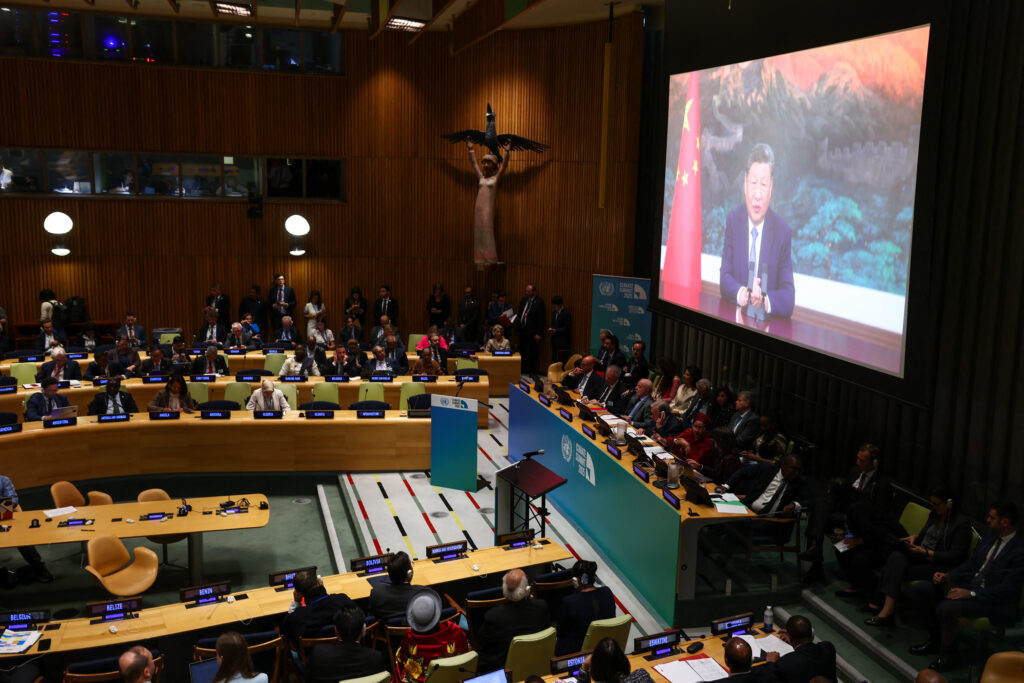PARKER, Ariz. — Against a backdrop of the Colorado River, members of the Colorado River Indian Tribes watched Secretary of the Interior Deb Haaland, Arizona Gov. Katie Hobbs and Amelia Flores, the tribe’s chairwoman, sign a historic agreement on April 26 that asserts the tribe’s right to lease portions of their allocation of the river’s water to users away from the tribal land.
The agreement between the tribe, the Interior Department and Arizona gives the tribe the ability to lease, exchange or store a portion of its Colorado River water entitlement. As one leader expressed, the tribe is stepping away from the “outdated framework” of federal restrictions that constrained their means to supply water to areas off the tribal land.
The financial gain for the tribe will allow them to invest in services that help tribal members, to build needed infrastructure and update systems for agricultural purposes.
We’re hiring!
Please take a look at the new openings in our newsroom.
See jobs
“This is a significant event in the history of CRIT,” Flores said. “These agreements clear the path for CRIT to finally be recognized as a central party in all future decisions regarding the Colorado River. … Today, we celebrate the empowerment of our rights to make our own decisions with who, when and how our water sources may be used.”
The tribe’s membership consists of the Mohave, Chemehuevi, Hopi and Navajo. The Colorado River flows through the tribe’s land in Arizona and California. The reservation was established in March 1865 for the Mohave and Chemehuevi, both of whom inhabited the region. In later years, Hopi and Navajo relocated to the area.
“This river flows through us,” said Flores, who is a member of the Arizona Governor’s Water Policy Council, a group established last year and tasked with modernizing the state’s management of groundwater.

The agreement comes as Arizona deals with ongoing drought and discussions to address climate change.
“Today may mark the end of the work to complete these agreements but it marks the beginning of the next chapter for water conservation in Arizona,” Hobbs said.
“The implementation of these agreements and the new fundability for the Colorado River Indian Tribes to use their water resources in new and creative ways presents an enormous opportunity for additional conservation and water management solutions as we confront climate change and the stress it is placing on our water supplies,” she added.
The governor said the tribe has been a longtime partner in protecting the Colorado River. This includes a vital role in preventing Lake Mead from dropping levels so low that the reservoir might not have been able to generate power or supply downriver communities in 2019 as part of the drought contingency plan developed by states that receive river water in the lower basin.
A day before the event, Haaland visited the river and toured the Parker Dam, where she heard about how the ongoing drought is impacting communities. She is a member of the Pueblo of Laguna in New Mexico, a state that is part of the Upper Colorado River Basin.
“The agreement will enable CRIT to continue leading with collaborative strategies in support of the resilience of the Colorado River,” Haaland said. “This agreement reflects years of cooperation between the federal government, the state of Arizona and the tribes.”
She added that it demonstrates the Biden administration’s commitment to tribal self-determination and sovereignty.
Margaret Vick, the tribe’s water attorney, said the CRIT has always farmed their land, which generates revenue for them.
Welcome signs on Arizona State Route 95 greeting motorists arriving in Parker feature the word, “agriculture.”


Although the tribe holds the largest and most senior right to Colorado River water in Arizona, they were blocked from deciding alternatives for its use outside of their land. According to Vick, the U.S. Supreme Court in 1963 confirmed the tribe’s reserved water rights—an allocation with priority dates ranging from 1865 to 1876.
“These early priority dates are the most senior in the lower basin and it is this seniority that makes them such a valuable asset,” she said.
About 40 years ago, tribal leaders started examining the possibility of leasing river water to users outside their reservation. The effort became viable in the last decade because of the looming shortages in the Central Arizona Project, a system of canals that deliver Colorado River water from northern Arizona to the central and southern parts of the state.
“The council established a singular goal, to obtain and confirm their sovereign authority to enter agreements to lease or conserve water off reservation in exchange for secure revenue,” Vick said.
As part of that effort, tribal members passed a referendum in 2018 that supported leasing river water, she explained.
“The previous councils have laid the foundation for this legislation, but this council brought it across the finish line,” the tribe’s Vice Chairman Dwight Lomayesva said.
U.S. Sen. Mark Kelly, D-Ariz., introduced the Colorado River Indian Tribes Water Resiliency Act of 2022, which cleared the way for the agreement. President Joe Biden signed the bill into law in January 2023.
This was the first legislation of its kind, and was not easy to get across the finish line, the senator said.
“This is a big deal for the tribe’s sovereignty, for the tribe’s economy, our collective efforts to protect our water resources and for partners who want to work with the tribe,” Kelly said.
This story is funded by readers like you.
Our nonprofit newsroom provides award-winning climate coverage free of charge and advertising. We rely on donations from readers like you to keep going. Please donate now to support our work.
Donate Now
Before commenting about the agreement, Haaland briefly talked about how she learned the importance of water while staying with her maternal grandparents in Mesita village on Laguna Pueblo land.
“There was one water spigot for the entire village. My cousins and I had the job of taking our galvanized steel buckets and going to that spigot and hauling water back to the house so that my grandmother could cook,” Haaland said. “Seeing my grandparents navigate this hardship made me realize how precious water is. My grandmother wouldn’t waste a single drop because of the care it took to get it to her house.”
Before departing after the event, she walked to the shore of the Colorado River, then blessed herself with its water.

















